Main Em Dash Takeaways:
- Em dashes look like this: —
- They are much wider than en dashes and are also called long dashes.
- Type em dashes by pressing Alt+0151 for Windows or Shift+Option+Minus (-) for Mac.
- An em dash is about the width of the letter ‘M’, which is where it gets its name
- When you think of an em dash, think of emphasis. They often help emphasize specific information.
- Long dashes help add clarity, signal a break, or indicate an interruption in a sentence.
- Typically, you shouldn’t include a space before or after the em dash.
- An em dash can replace commas, parentheses, and colons.
When a comma or colon isn’t enough, or you want to avoid using parentheses, the em dash may be the punctuation mark for you. This versatile symbol helps adding structure, clarity, and even personality to otherwise complex sentences.
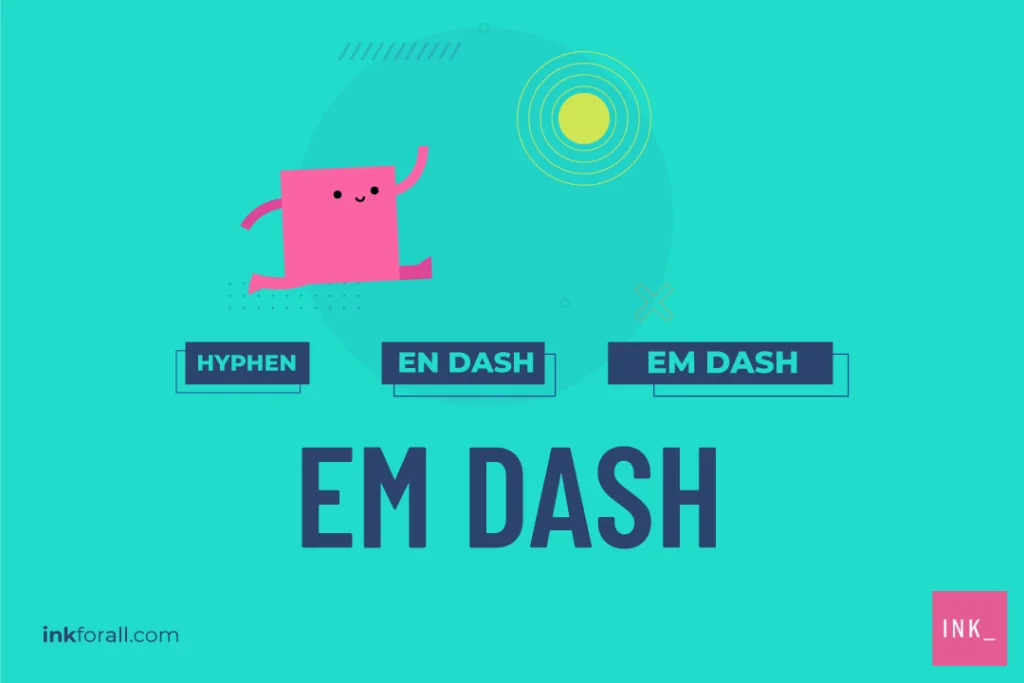

What is an Em Dash Used for?
An em dash is the longest of the dashes. It has multiple uses, making it a especially useful in informal writing or fiction. Use the em dash to indicate an interruption or an abrupt change in thought. What’s more, an em dash can also signal a sentence break when you want to clarify something or give extra focus to a list of items. On the other hand, they can substitute missing information or missing parts of a word. Finally, you can use em dashes as an alternative to parenthesis.
When to use an em Dash
Let’s take a closer look at each way you can effectively use this versatile punctuation mark in your sentences:
1. To Signal an Interruption
Em dashes can signal an interruption, particularly in dialogue and other forms of written speech. It’s a technique that’s often used when authors transcribe verbal communications.
2. To Indicate a Sentence Break
Additionally, you can use long dashes to show a break in a sentence. This use is especially effective for clarifying information (otherwise known as appositives).
While using a comma also fits this situation, the visual break an em dash provides can give the sentence more emphasis.
3. To Set off Parenthetical Information
If parentheses aren’t your friends, em dashes can also be used to set off parenthetical expressions.
Parenthetical expressions are words or phrases that are added to a sentence without changing its initial meaning or grammatical structure. Think of them as an aside, or sidebar.
4. To Emphasize the end of a Sentence
In this situation, em dashes behave similarly to a colon. However, a colon is more formal. In both cases, the point is to emphasize a conclusion.
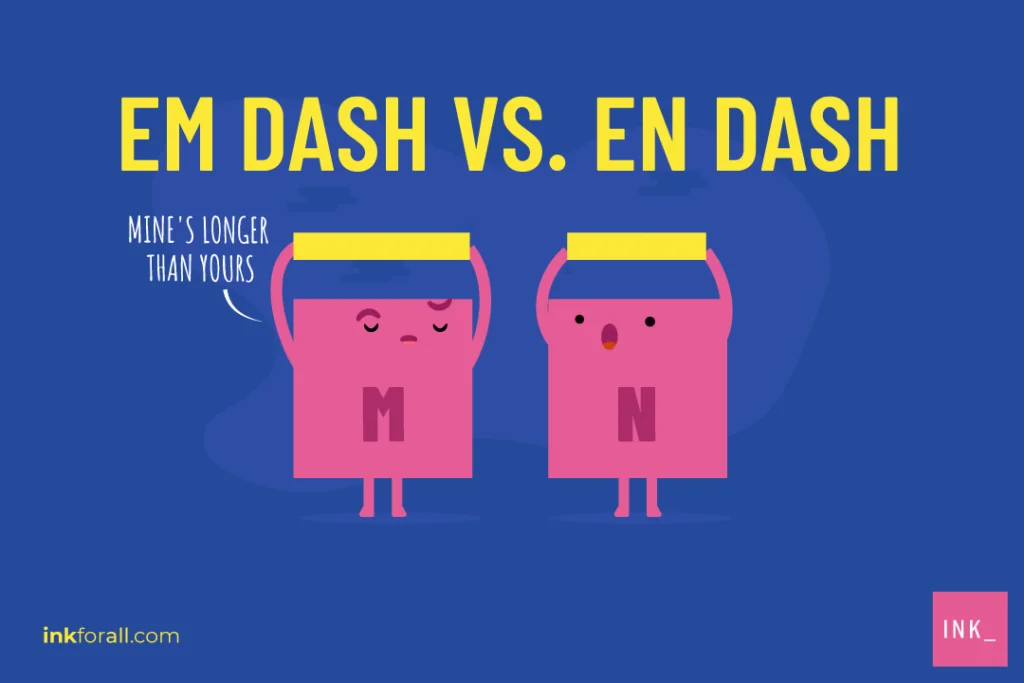

5. To Stand in for Missing Portions of a Word
Pairing em dashes together helps represent an omission. In other words, this usage helps show that certain information is missing.
For instance, use two consecutive em dashes to indicate missing letters in a word. This works whether you’re trying to show the reader that the letters are unknown or you just left them out on purpose.
On the other hand, let’s say you want to indicate that an entire word is being left out. In this case, you should use either a double dash or three consecutive em dashes.
Beware! Punctuation surrounding the missing words and letters should follow standard rules of grammar.
6. To Give a List More Focus
When a sentence begins with a list, try following it up with an em dash.
In this way, the long dash makes your eye stop and focus. As a result, this can help your reader see connections between the list and the unifying idea, or main point, that comes next.
7. To Show an Abrupt Change in Thought
Em dashes are great for showing a sudden change in thought. This is especially true in informal or creative writing.
For example, if one of your characters quickly changes her mind, you can use a long dash to show this switch to your readers.
Can I use an Em Dash in Formal Writing?
There’s no rule against using em dashes in your writing. However, some grammar experts recommend using the punctuation mark sparingly in formal writing. For example, it’s best to avoid em dashes when writing formal technical information that requires a neutral or more direct tone.
Consider replacing the em dash in formal writing with punctuation such as commas, colons, semicolons, and parentheses. For example:
Note that this punctuation serves the same purpose as an em dash in the sentences above. They can indicate an interruption, added emphasis, or an abrupt change in thought.
How do I Type an Em Dash?
Keyboards typically don’t offer an em dash option, so how do you type them? If you’re working on a computer, press Ctrl+Alt +Minus(-) or Alt+0151 on windows. Or, press Shift+Option+Minus (-) on a Mac. Alternatively, most word processors offer charts of symbols you can insert in a document. Many programs also automatically create an em dash when you type two single hyphens together. On cell phones running Android’s Gboard or iOS operating systems, press and hold the hyphen on the onscreen keyboard. Several options will pop up, including the em dash.
- For Windows, press Ctrl+Alt +Minus(-) or Alt+0151.
- If you have a Mac, press Shift+Option+Minus (-).
What is the Difference Between an Em Dash and an En Dash?
Each differs in size and function. In fact, their names hold a clever clue to what makes them different. The em dash is physically about the width of the letter ‘M’—thus, literally, “em” dash. Its smaller counterpart, the en dash, is about as wide as the letter N is. The en dash is primarily used to indicate a range of numbers or a span of time. It can also be used to show a connection between two words, especially if those words are already hyphenated. This is what’s known as a compoundadjective.
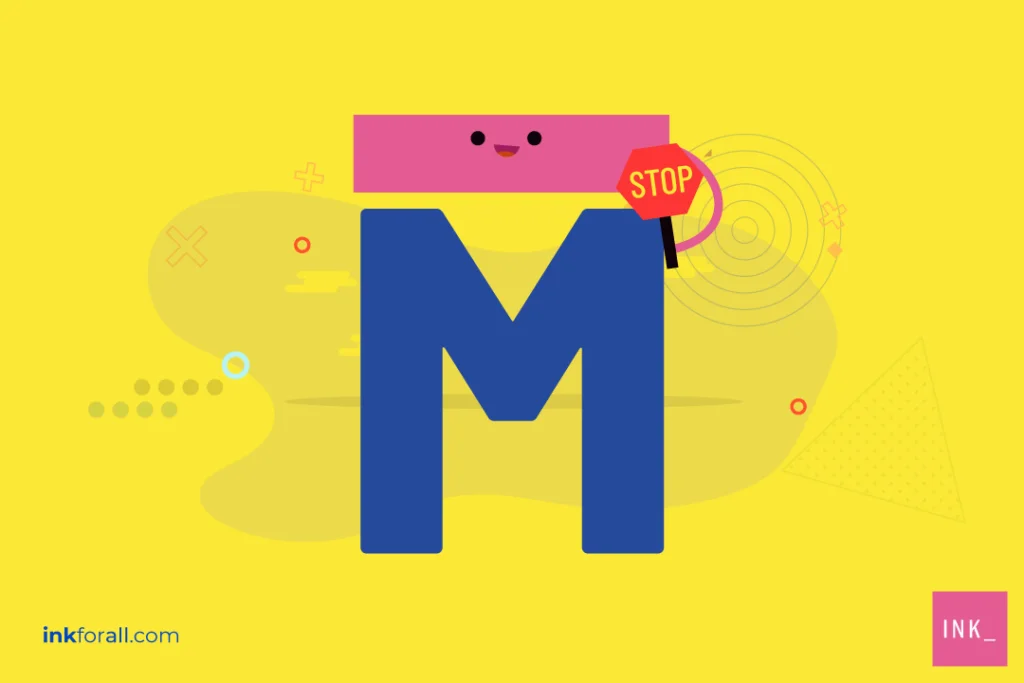

Not all dashes are created equal. These two lookalike punctuation marks also serve markedly different functions. Here are some examples of how to use an en dash:
(Notice in the second example how pro-choice and pro-life are each hyphenated, while the en dash connects them.)
Em Dash vs. Hyphen: The Battle of Big and Small
Rounding out the trio of dashes is the em dash‘s little cousin, the unassuming hyphen.
The shortest of the three dash-style punctuation marks, the hyphen is used to connect two or more words. They can link up words that are working together.
Additional Rules and Usage for Em Dash
Here are a few other simple but important things to remember to use em dashes like a pro:
- Avoid run-on sentences and ensure clarity by only using the em dash twice per sentence.
- In most instances, the long dash is typed or written with no space before or after it. However, many newspapers and publications that follow the AP Stylebook include a space before and after the em dash.
- The em dash should be used sparingly, if at all, in formal writing.
Wrapping Up: The Long and the Short of Dashes
The em dash is one of the most versatile punctuation marks in the English language. This linear-appearing lifesaver can replace commas, parentheses, and even colons—often creating more emphasis than their more traditional counterparts. Long dashes can also indicate missing portions of a word, provide focus for a list, and signify a break in a sentence.
Feel Like an em Dash pro? See What you Know…
Em Dash Question #1
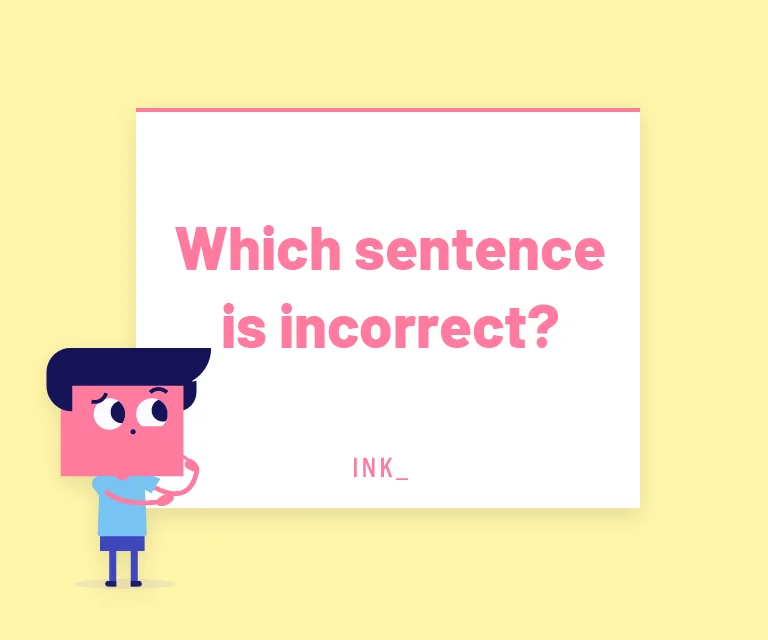

The answer is C. Em dashes are ideal for informal writing and should be used sparingly in formal writing.
Em Dash Question #2
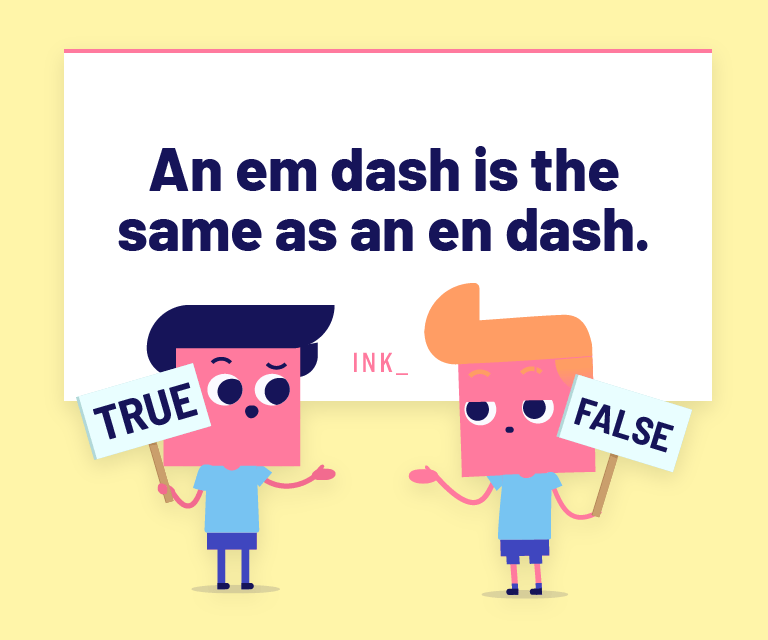

The answer is FALSE. An en dash indicates a range of numbers or a period — for example, 1980-1999. It can also show a connection between two words.
Em Dash Question #3
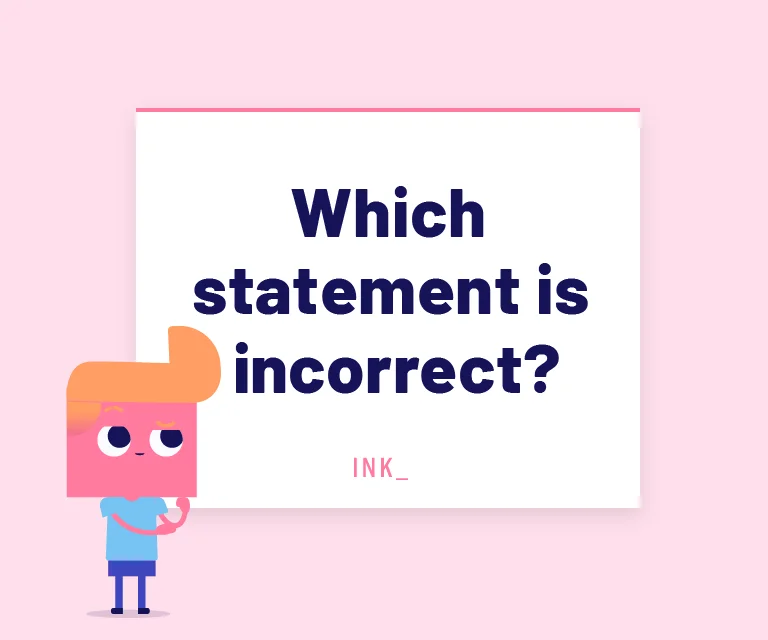

The answer is A. Em dashes can replace commas, parentheses, or a colon.
Em Dash Question #4
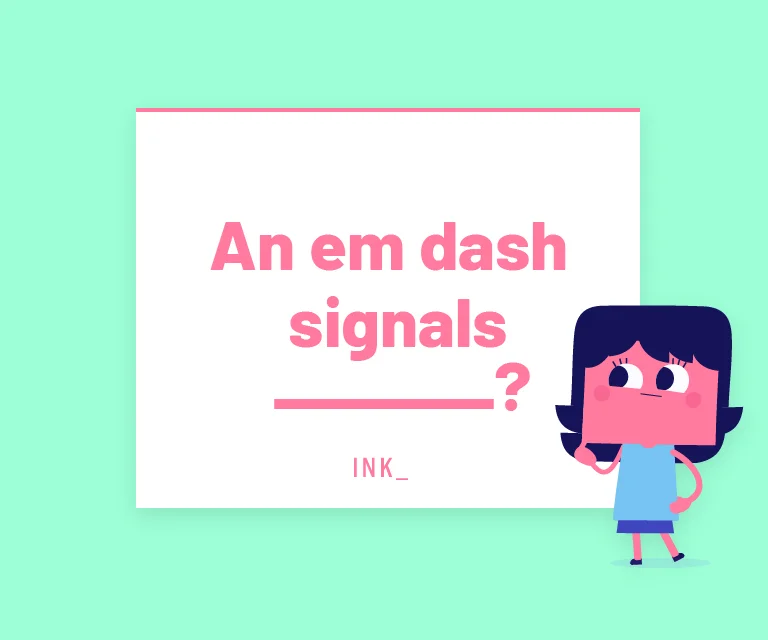

The answer is D. An em dash sets off a word or clause and can be used to signal an interruption, add extra emphasis to a sentence's conclusion, or show an abrupt change in thought.

I think you have a typo in the answer to Question #1.
Hi Stephen!
Thanks for reaching out and for your patience. We double-checked question number #1, but we haven’t spotted a typo. Send us more details on the typo? We want to make sure our resources are as on point as possible for you.
Thanks!
Thanks for the informative article.
Don’t no one ever going to get this thing going where I can watch something
Hi, Paul! Thanks for your comment. Are you looking for video content on this topic? We’re planning to add some quick videos to our articles soon. What do you think? Thanks again for stopping by and keep the suggestions coming!
Yes it would be good to see it